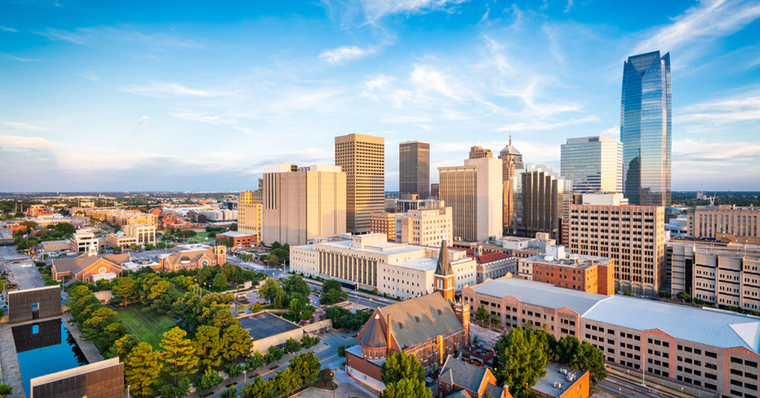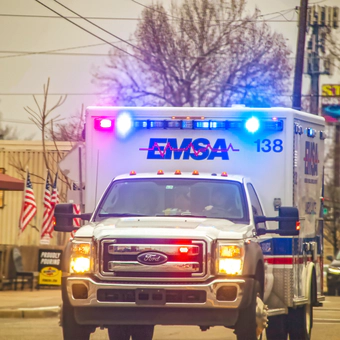Drug and Alcohol Addiction and Drug Rehab in Oklahoma

Oklahoma is home to nearly four million people, with Tulsa and Oklahoma City being the largest population centers in the state. As may be expected, these cities have the greatest concentration of drug rehabilitation facilities in the state.
According to the Substance Abuse and Mental Health Services Administration, there are 195 drug rehab and addiction treatment facilities in the state of Oklahoma. At any point in time, are typically 16,300 in recovery at these drug and alcohol addiction treatment facilities. Those seeking help at one of these facilities have many choices, ranging all the way from hospitalization to informal community support groups in church basements and library meeting rooms.1
-
Outpatient care: By far, the majority of individuals seeking sobriety are getting help at outpatient clinics. Of that 16,300 in treatment, nearly 15,000 chose outpatient help. While outpatient can help individuals transition into a new sober life, very often those seeking outpatient treatment actually require a hire level of care to break from from their addiction and get a new start.
-
Intensive outpatient: More than 300 of those choosing outpatient selected intensive outpatient programs. An intensive outpatient program requires ten or more hours per week of participation. Clients in this program go home every night.
-
Detoxification: A total of about 80 people chose a detoxification program in a hospital, residential program or outpatient program. While a detox program is a good start to a person’s recovery, it does not comprise rehabilitation. It only gets a person safely off the drugs or alcohol they were using. A complete drug rehab program must follow if sobriety is to last.
-
Hospital inpatient treatment: The people most likely to need hospital inpatient care are those with a mental or physical health condition that makes it hazardous for them to stop drinking or using drugs.
-
Residential rehab: Fewer than 1,500 people are typically in residential drug rehab facilities in Oklahoma. For a person who needs support and supervision while they get back on their feet, long-term residential rehab gives them the structure they need to rebuild their life skills. In addition, there are more than a thousand formal and informal support groups and meetings scattered across the state.
The Scope of the Problem in Oklahoma

Prescription pain relievers are still trapping many Oklahomans in addiction. More than five percent of those aged 18 to 25 (the age group most susceptible to drug abuse) misused a pain reliever in the past year.2
About one in every seven Oklahomans is a current drug user. Almost one in five has consumed marijuana in the past year. With medical marijuana now available in the state, the number of marijuana growing operations continues to increase, making the drug easily available to anyone with a medical card. Meanwhile, seizures of black market marijuana are also going up.
At the same time, fentanyl seizures have been increasing in the state.3 This is especially true for counterfeit pills that contain no pharmaceutical product but only illicitly-manufactured fentanyl. These fake pills are often strong enough to kill a person the first time they try one.
While only about 1.5% of those over 18 were using methamphetamine, it was the top drug taking lives across the state. That fact is a testimony to the strength of the methamphetamine on the market and how this powerful stimulant stresses both the body and the mind.
Between 2019 and 2020, meth-related overdoses increased by 20%. It’s not surprising, then, that nearly 6,000 people are admitted to treatment for methamphetamine addiction each year.3
Among that susceptible age group, the 18 to 25-year-olds, more than one in four suffered from a substance abuse disorder. They were either harming themselves with alcohol or drugs or were dependent on the substances. If they suddenly stopped consuming the substance they were addicted to, they would suffer withdrawal symptoms and cravings that far too often would cause them to relapse. In the older age groups, the percentage of those with this disorder was about 15%.2
The majority of these individuals do not get the help they need at a drug rehab. That means they will continue to misuse prescriptions, drink too much or abuse addictive illicit drugs, remaining in peril every day.
Overdose Losses in Oklahoma

Along with the rest of the country, overdose losses in Oklahoma dipped in 2017 and 2018. They fell from a high of 848 for a twelve-month period ending in June 2017 to 590 for the period ending in August 2019. At that point, the relief ended. The numbers climbed until by February 2022, the number of overdose deaths for the prior twelve months reached 971.4
While only about three percent of Oklahomans used a drug other than marijuana in the past month, it’s these other drugs that are taking the greatest toll. Blaine County, just west of Oklahoma City, had the highest overdose rate in the state. The 9,500 residents of this small county struggled with drugs like methamphetamine, opioids like oxycodone and hydrocodone and benzodiazepines.3
In second place was Pawnee County with 16,000 residents. Oklahomans in this county primarily lost their lives to the same drugs plus alcohol, fentanyl, codeine and tramadol. And so it goes through every county in the state.
Over and above these losses, drug-related fatality traffic crashes are taking more lives. These losses have climbed from 190 in 2018 to 216 in 2019 and 255 in 2020.3
Recovery in Oklahoma
There are individuals needing drug rehab in every state and every corner of this country. In Oklahoma, there are many thousands of dedicated volunteers and professionals who want to help. A family with a loved one struggling with addiction should waste no time in selecting the best rehab they can find for that loved one.
With the high availability of methamphetamine and the increasing supplies of fentanyl on the illicit market, there really is no time to waste to get an addicted person on the road to recovery.
Sources:
-
Substance Abuse and Mental Health Services Administration. “2020 N-SSATS State Profiles.” SAMHSA, 2020. SAMHSA. ↩︎
-
Substance Abuse and Mental Health Services Administration. “2019-2020 National Survey on Drug Use and Health: Model-Based Prevalence Estimates.” SAMHSA, 2021. SAMHSA. ↩︎ ↩︎
-
Oklahoma Bureau of Narcotics and Dangerous Drugs. “Oklahoma Drug Threat Assessment 2021.” OBNDD, 2021. OBNDD. ↩︎ ↩︎ ↩︎ ↩︎
-
Centers for Disease Control and Prevention. “Provisional Drug Overdose Death Counts.” CDC, 2022. CDC. ↩︎
